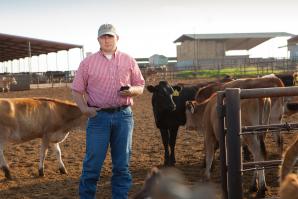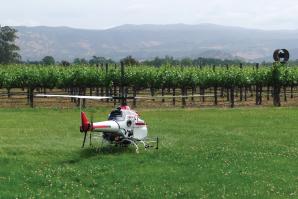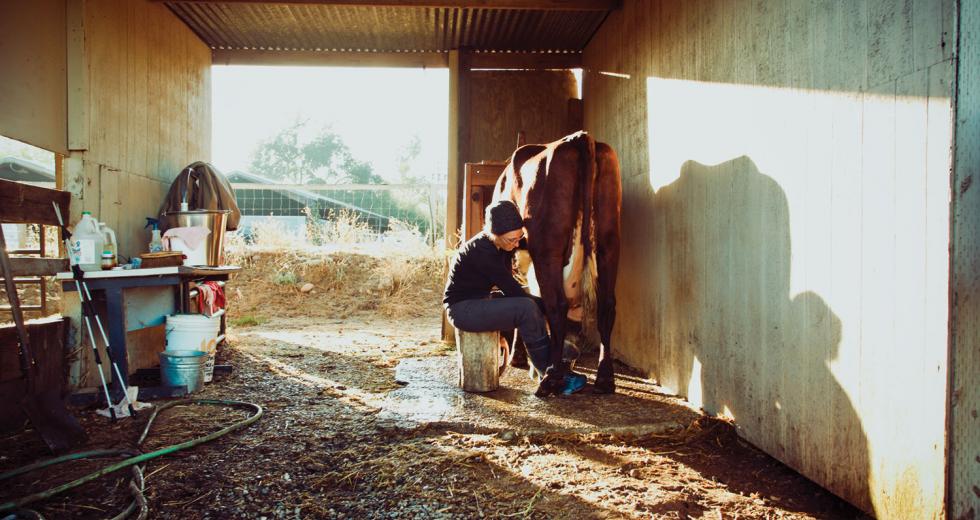When Eric Hart ended his eight-year military term, he felt like he was missing a sense of purpose. He tried a few corporate jobs, but he didn’t feel at home. He preferred working outside with his hands, and he wanted his job to serve something higher than a paycheck.
Now 26, he has completed his first year of an intensive farmer apprentice program offered at the nonprofit Soil Born Farms in Rancho Cordova.
Having never set foot on a farm as a kid, Hart represents the new face of fledgling farmers. While farm-family children sometimes hesitate to take over the business, increasingly they are being replaced by more women (a 30 percent increase from 2002 to 2007), city kids and middle-aged or even retired folks looking for a career change or side job.
These newcomers often have a passion for bringing fresh, locally produced food to their communities through small-scale, sustainable methods, including organic growing, community supported agriculture and urban farming.
Plus they’re not hindered by the prospect of living off farming alone. Hart is working toward a bachelor’s degree in history and is open to teaching during the school year and working a small farm during the summer.
“There’s a younger generation of people who are very interested in food, and that leads them to an interest in agriculture,” says UC Davis professor Tom Tomich, director of the university’s Agriculture Sustainability Institute and of the statewide UC Sustainable Agriculture Research and Education Program.
To meet this demand, this academic year, UC Davis launched a new bachelor’s degree program in sustainable agriculture and food systems. “There’s a real emphasis on experiential learning because so many of the students don’t come from a farm background,” Tomich says.
Nurturing this new crop of farmers is imperative because California agriculture is crucial to the state’s economy and to the nation’s food security, says Craig McNamara, president of the California Board of Food and Agriculture. California leads all states in farm income, bringing in $36.2 billion per year, and produces 400 crops, including half of the nation’s supply of fruits, nuts and vegetables. About 90 percent of farms are owned and operated by families or partnerships, employing 81,500 farmers.
Farmers under age 45 make an average salary of $160,022.
California Farm Link
“Growing new farmers is the most important thing we can do as a nation right now,” McNamara says.
But life for these new farmers could be tough. “Farming’s not easy, that’s for sure. It takes a person with a lot of passion and energy and patience to be successful,” says Liya Schwartzman, Central Valley regional associate for California FarmLink, a farm advocacy organization.
Farmers face numerous challenges: urban encroachment, steep costs for land and fuel, possible corporate takeovers, price-slashing retailers and uncertainties in weather, water supplies, product demand, prices and expenses. Combine those factors with long hours of physically demanding work and use of heavy equipment and potentially hazardous chemicals, and it’s no wonder the traditional industry is graying.
The number of California farmers under age 35 declined 43 percent between 1992 and 2002, and farmers age 65 and up outnumber farmers under 25 by approximately 60 to 1, U.S. Department of Agriculture surveys show.
But Tomich says, “Things may not be quite as bad as they seem.” Sometimes only the official landowners are counted rather than everyone working on a family farm, he notes.
New farmers nonetheless face hurdles, the main one being access to affordable land and credit. Today’s beginning farmers must overcome competition for land from developers, investors, retirees seeking country retreats and large agricultural businesses. Even if they find suitable land and are willing to face agriculture’s high financial risks, banks aren’t.
Since income from many small farms cannot sustain a family, many farmers take second jobs, start side agriculture tourism businesses or have their spouses work other jobs. Yet several encouraging signs for farming’s future have emerged.
One is the rising demand for sustainably grown food. California FarmLink reports that, compared with the national average of about $135,000 in annual farm sales, organic farms pull in $218,000. Farmers under age 45 make an average salary of $160,022 compared to $88,142 for farmers 65 and older, FarmLink shows.
Getting started is becoming easier. On Sept. 30, Kathleen Merrigan, deputy secretary of agriculture, announced $18 million in new U.S. Department of Agriculture grants for novice farmers. California FarmLink this fall is launching a low-interest loan program, and California Department of Food and Agriculture has recently given grants to farmer mentor programs.
In the Sacramento region, several nonprofits work collaboratively to support agriculture, offering educational programs for children, matching retiring farmers and landowners with aspiring farmers, helping new farmers access financial backing and teaching workshops covering business planning, farm financing and farm succession.
Some, such as California FarmLink’s Central Valley office in Davis, Soil Born Farms Urban Agriculture & Education Project and the Center for Land-Based Learning in Winters, also offer apprenticeships.
In February, the Center for Land-Based Learning would launch a six-month training program coupled with a farm business incubator.
For eight years, Soil Born Farms has had a similar program running March through October. Classes are offered in everything from crop rotation and pest management to marketing. In 2013, the nonprofit plans to expand the program by two years and include incubation and land placement.
“A year ago, I had no idea I could get where I am right now and get my foot in the door as a farmer. A lot of opportunities are opening up to me,” says apprentice Hart.
Shawn Harrison, a Soil Born Farms co-founder, says the program received more than 100 applicants from all over the country for its first-year apprenticeship program alone.
If young people see that the general public respects farmers as important, more people will gravitate toward the career, says Mary Kimball, the Center for Land-Based Learning’s executive director.
“If they see a public who engages, wants to know and learn more about the source of their food and connects with their community of farmers, they will be encouraged to enter the industry,” she says. “If there is demand from local and regional economies for local, safe and healthy food — farmers will provide it.”
Recommended For You

Reap, Sow, Tweet
Branding ag through social media
“Good morning, Sacramento! It’s a perfect day for a pig roast. Come out and join us,” hog farmer Perrin Clark tweeted on a long-awaited day in May.

The Robots are Coming
Technologies of tomorrow are making their way onto the crop fields of today
Scientists, engineers and entrepreneurs are racing to give farmers tools to boost agricultural productivity. These five technologies — some big, some small — could change the face of farming.



